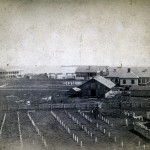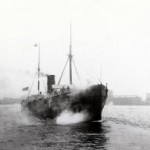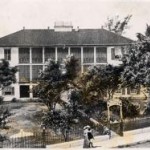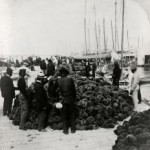Historic District
Yellow Fever
This green, picket-lined field is a military cemetery. Many of the grave sites hold the remains of Civil War soldiers who died from yellow fever. More soldiers were struck down in the South by disease than by armed skirmishes. Yellow fever was greatly feared and misunderstood throughout the 1800s. Ships, cities and homes were quarantined to stop the disease. A Key West doctor, Joseph Yates Porter’s use of quarantines was an important step to finding a cure for the disease in the early 1900s.
Mallory Steam Line
Charles Henry Mallory formed the Mallory Ship Line in the 1860s. The Mallory Line operated passenger and freight shipping from New York City, through Key West, to Galveston, Texas. The ship line operated seventy ships for their numerous coastal routes. The expansion of the railroad signaled the demise of steamship travel to Key West. That coupled with the advent of automotive travel in the 1920-30s sealed the fate of the Mallory Line. Coastal water shipping declined and Mallory closed in 1941.
Marine Hospital
At the request of U.S. Navy Commodore David Porter, construction began for a Marine Hospital in Key West in late 1844. The new hospital was completed in less than a year and opened on August 2, 1845. The hospital was equipped with sixty beds. For ninety years the hospital served both civilian and military personnel during the Civil War, Spanish American War, both World Wars, and the yellow fever and influenza epidemics. It closed as a hospital January 1, 1943.
Sponging Docks
The first shipment of sponges left Key West and arrived in New York in 1849 starting an island industry that lasted 50 years. Sponges grow in sponge beds in 20 feet of water. They are harvested using a pole with a pronged rake on the end to snare the sponges. By 1890, Key West held a monopoly on the sponge trade in the United States. At its peak, 1,200 spongers on 350 “hook boats†caught 2,000 tons of sponges a year.
The Outer Mole
The origins of the Mole Pier date back to several years before the Civil War. It was a wooden dock for Fort Taylor. With plans to expand the Naval Station into a submarine base following World War I, engineers redesigned and extended the pier as a concrete breakwater for the harbor. The Navy retained ownership of the pier after the sale of the Naval Station in 1986. It is currently used by the Navy, Coast Guard, NOAA, and cruise ships.




